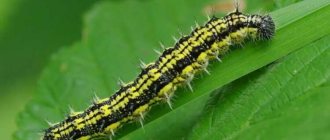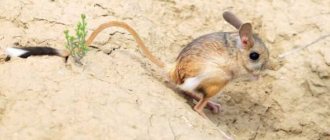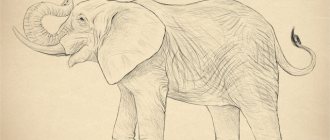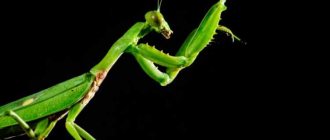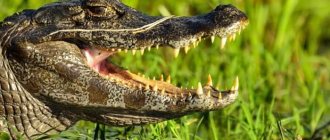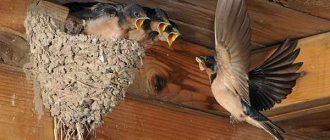- Where does the sloth live?
The sloth, which lives in South America, got its name for a reason, because it is truly one of the slowest representatives of the animal world (although it can compete with it in this title
turtles and other snails), and yet the slowest among mammals. Sloths are perfectly depicted in the beautiful children's cartoon Zootopia, where the natural slowness of these creatures was wittily compared to the slowness of some government officials.
Well, cartoon is cartoon, and in our article today we will describe real sloths living in natural conditions.
Description, structure, characteristics
The appearance of the sloth is the most amazing and unique; it is unlike any other representative of the animal world. Even their closest relatives from the order of edentates -
anteaters (by the way, also with an amazing appearance) and armadillos are completely different from them.
A characteristic feature of the sloth is the presence of special fingers in the form of hooks. The sloth usually has three toes, but there are species that have only two. These fingers are not just for the sake of beauty, they are actually very strong and tenacious, with their help sloths can easily hang on tree branches, where they spend most of their lives.
The size of sloths is not large: the body length of this animal is usually 50-60 cm, weight 4-6 kg. The sloth's body is covered with fur, which is brownish-gray in color.
The sloth's head is small and also covered with fur, sometimes so much that only the animal's eyes are visible. In general, the sloth's face somehow resembles either Chewbacca from Star Wars, or just an unusual shaggy
monkey. Interesting fact: the teeth of a sloth are devoid of enamel, however, they are all the same as a selection.
Do sloths have a tail? Yes, there is, but it is very small, so it is practically invisible under their thick fur.
Nature has given these animals an excellent sense of smell, but other sense organs have not worked out very well: vision and hearing in sloths are poorly developed. Their brains are also small, the small size of which probably plays a role in their slowness, but on the other hand, these animals are always calm, good-natured, and phlegmatic.
The internal structure of the sloth's body is not the same as that of other mammals, for example, the liver is located closer to the back, the spleen is on the right, their stomach and intestines are disproportionately larger, and this is not without reason. The fact is that sloths are very clean animals, and in order to relieve themselves, they descend from the trees to the ground, where they become defenseless against predators who are not averse to feasting on them. To minimize this risk, sloths relieve themselves less frequently, on average once a week, and are able to do so due to their larger stomachs.
The movement of a sloth on the ground looks very comical, and all because of the long fingers with large hooks, it seems that sloths are trying with great effort to overcome even the smallest obstacle. The speed of movement of a sloth on the ground is only a few meters per minute!
But oddly enough, sloths are excellent swimmers; they swim many times faster than they can move on land.
It is also interesting that sloths have one of the lowest body temperatures among mammals, averaging from 30 to 33 degrees, and sometimes dropping to 24 degrees. Such a low temperature is due to the fact that the metabolism of sloths is extremely slow.
Sloths also live up to their name not only by their slowness, but also by their love for a good sleep. Yes, they are big sleepyheads, how long does a sloth sleep per day? They usually sleep from 10 to 15 hours a day, which is also rare in the animal kingdom. Moreover, it is interesting that sloths sometimes sleep simply hanging upside down on tree branches.
Like this sleeping sloth.
Lifestyle and character traits
The unique features of these members of the family do not end with their strange appearance. Sloths have a very peaceful and friendly disposition. These are very phlegmatic creatures that will not waste time exploring the territory, getting to know other animals or playing.
Sloths spend all their free time either sleeping or eating. The only exception is the mating season and raising offspring. But even here sloths do not show excessive activity and continue their lives in a unique, leisurely rhythm.
Poll: Would you like to have a sloth at home?
Yes, because I think they are quite nice and friendly.
14.29%
Yes, because I think it’s hard to imagine a calmer animal.
0%
No. But I would love to talk more closely with an exotic animal.
28.57%
I believe that wild animals should remain in their natural habitat, and not huddle in city apartments.
42.86%
No, because I don’t understand what’s attractive about them. In my opinion, dogs and cats are much more interesting.
14.29%
Voted: 7
Lifestyle of sloths
Most species are active in the evening or night hours, but some members of the family prefer daytime.
Sloths lead a solitary lifestyle, but if another individual wanders into their territory, they remain indifferent. Surprisingly, even between males, relationships never go beyond the limits. Sloths continue to lie peacefully or hang on the branches, feed and sleep at their leisure. The maximum emotion they are capable of is an angry sniffle, which never ends in a fight or brawl.
Sloths spend most of their lives in tree branches at fairly high altitudes.
Sloths choose warm and humid tropical forests to live. An animal can live on one tree for one or two months. The main thing is not to run out of food. After all the tasty leaves are eaten, the sloths descend to the ground and move to another suitable tree. At this time, they become very vulnerable, as they cannot run or walk quickly.
The slowness of sloths is expressed not only externally, but also internally. They have a very slow metabolism, slow blood circulation and breathing. Due to slow digestion, bowel movements may occur only once a week. In some cases, individuals can go without a “toilet” for a month.
This lifestyle helps sloths remain undetected. After all, most predators have black-and-white vision and simply cannot notice a stationary target in dense tree branches.
Character and habits
These are very peaceful and friendly animals. Sloths never attack anyone. According to the observations of zoo workers, it is quite difficult to tear off the tenacious claws of a sloth from the bark. To remove a pet from a branch, you have to bend your fingers one at a time.
When resting, the sloth clings tightly to a branch with its front and hind limbs and hangs upside down. He places his paws as close to each other as possible, which is why his back arches. The animals' heads either lie on the chest or hang down freely.
The animals move very slowly through trees and the ground, but despite their characteristics they swim quite quickly.
Long paws help sloths float confidently on the water. Sloths do not dive and keep their heads above the surface of the water while swimming.
Due to their slow metabolism, sloths easily tolerate short periods of fasting.
During rain, animals move quite briskly until they find shelter. After this, the sloth calms down and does not leave a secluded, dry place until the weather becomes clear.
Sloths never jump or run. Despite their slowness, sloths' forelimbs are incredibly strong. The hind legs have less muscle mass.
Due to their strong bone structure, sloths are able to survive falling from trees without any problems. But cubs often die not because of injuries from a fall, but because the mother does not go down to get them.
Zookeepers note that sloths are able to recognize and become attached to people. When animals see or smell a familiar person, they extend their forelimbs towards him and quietly snore. Almost all sloths love to sit on people's arms and cuddle with people. Among adult individuals, it is quite rare to come across grumpy and unsociable animals.
Nutrition
Sloths are good-natured herbivores; their main food is various
leaves and fruits growing right under their noses. Sloths do not need to get their own food or look for prey; juicy tropical fruits growing in their habitats, no less juicy foliage, can become a source of both food and moisture for them.
What do sloths eat?
Sloths are herbivores, although sometimes they are not averse to eating insects, small tree lizards and larvae. Sloths prefer to eat what is under their nose. They rarely move in search of food and remain in one place until the food runs out. But even when the source of food disappears, sloths remain in one place for a long time, as they calmly tolerate the lack of food for several days.
The basis of the diet consists of leaves, fruits and tender shoots.
Sloths do not need an additional source of water, since the liquid contained in their food is sufficient for them. Sloths prefer eucalyptus leaves, although they may eat other plants.
The leaves have a reduced calorie and nutritional content, so sloths constantly chew, interrupting only to sleep. In addition, leaf plates take a very long time to digest in the stomach of animals. The process of assimilation of the daily portion can last from 60 to 90 hours.
Surprisingly, the bulk of a well-fed sloth's body consists of the food it eats. This is approximately 2/3 of the total body weight.
But having found a comfortable place, they can easily eat while sitting or lying down. In this case, the leaves are torn off using paws and claws. Some individuals tear off several shoots with young leaves at once and eat them with pleasure, lying on their backs in a fork in the trees.
Enemies in nature
But the sloths themselves, in turn, can become food for various predators of South America, primarily for the anaconda, puma, jaguar and its melanated relative
panthers. Predators attack sloths, as a rule, at the moment when they descend from the trees, where they are relatively safe, to the ground. As we wrote above, sloths descend to the ground mainly to relieve themselves, and at this moment the greatest danger awaits them.
Humans have also been the eternal enemy of the sloth since ancient times: American Indians hunted sloths for centuries, finding their meat tasty and nutritious. However, the American Indians, unlike the white man, were careful about nature and did not kill more sloths than they needed for food.
Sloth Habitat
Sloths live mainly in South America. This can be explained by the fact that the animals’ usual habitat is tall and spreading trees, such as oaks, eucalyptus and some others. Spending almost their entire lives on trees, animals especially appreciate the soft and juicy leaves that remain that way all year round.
The nature of South America, rich in various exotic animals, is dangerous for the sloth. Descending to the ground, it becomes vulnerable and defenseless prey for many predators (mammals, reptiles).
In addition to animals, the species we are considering is also hunted by people. Of particular value is the juicy meat and soft skin of animals. Mammals also suffer significantly from weather conditions and deforestation.
Lifestyle
Sloths are truly lazy and phlegmatic animals, spending most of their time snoring on branches. Sloths also love and appreciate solitude, and are rarely seen in groups or even just two individuals together. But if sloths do happen to meet their own kind, then thanks to the good nature and peaceful nature of these animals, they will never show the slightest signs of aggression and will calmly feed themselves or sleep next to them. A sloth can express its maximum dissatisfaction by loud snoring.
Captivity
As already mentioned, such slow-moving mammals are often kept in zoos or even at home. In order for a sloth to live comfortably in a man-made environment, it is necessary to provide it with the right conditions for this.
For such animals, which are not accustomed to moving on land, it is necessary to equip special complexes. Sloths quickly adapt to them and will enjoy them no less than tropical trees.
Sloths do well in captivity
The natural pacifism and peaceful balance of animals allow them to easily bond not only with people, but also with other mammals. In just a few days, these lazy creatures will happily greet a zoo worker or their owner. As for visitors, they really love watching funny pets. Sloths do not resist this and behave very easily and naturally in front of people.
Types, photos and names
In general, there are six species of sloths in nature, of which four species are three-toed sloths, which have three toes, and two species of sloths are two-toed sloths. Below we will describe the most interesting of them.
Three-toed sloth
This species could be called the common sloth, since it is, in fact, the most typical and widespread representative of the sloth genus. Everything described above concerns, first of all, three-toed sloths.
Pygmy sloth
A characteristic feature of this three-toed sloth is its small size (hence its name), it is the smallest of the sloths, its body length is on average 40 cm, and its weight is no more than 2-3 kg. In all other respects, except for size, it is similar to its large three-toed relative.
Two-toed sloth
As you might have guessed, this type of sloth has one less finger at its disposal than its closest relatives. Despite the absence of one toe, the two-toed sloth is just as good at clinging to tree branches as its close relatives. In all other respects, the two-toed sloth is similar to the three-toed sloth.
Sloth habitat
It's not hard to guess where sloths live. Of course, where there are a lot of broad-leaved trees. This representative of the suborder of mammals loves warm climates, so look for it in the tropics.
The crowns of trees in Brazil, Honduras, and Paraguay are the animal’s favorite places. Among the dense vegetation of Uruguay, Panama and Argentina, he also feels at home.
Reproduction
How do sloths reproduce? Depending on the species, the mating season for these animals occurs at different times. Thus, three-toed sloths usually begin mating in the spring, in March-April, but two-toed relatives can do this all year round.
Pregnancy for a female sloth lasts six months, after which only one baby is born. Moreover, it is interesting that the birth of sloths takes place right on the tree - clinging to a branch with her front paws, the female hangs vertically downwards, and in this position gives birth to a baby.
As soon as it is born, the little sloth grabs onto its mother’s fur and quickly finds her breast in search of milk. Sloths can be breastfed for up to two years, only after this period do they get used to solid food. The sloth mother, as a rule, is caring and tender towards her cub, but the sloth father is no longer interested in his offspring.
Reproduction and care of offspring
Reproduction of the species occurs quite rarely due to the small number of males in the population. Moreover, during his life, a male can become the father of more than ten cubs. This is due to the fact that sloths are by no means monogamous and, moreover, fickle partners. They find a mate only for the mating period.
A female animal usually bears one baby, spending about 6-7 months on it. Pregnancy proceeds without complications, especially without complicating the life of an already practically immobile female.
The cub is born rather large and from the first minutes of its life learns to be independent. The fact is that its birth, like other life processes, occurs on a tree.
Therefore, he needs to climb up on his own, clinging to his mother’s thick fur. At first, little sloths, unable to move independently in the trees, are very dependent on their mother.
At the age of nine months, the baby leaves his mother and moves to another place, turning it into his territory. By about 2.5 years, the cubs reach the size of adults.
Interesting Facts
cats or dogs. And why not, because sloths are good-natured, unpretentious, sleep most of the time and will not cause any particular inconvenience.
Where does the sloth live?
Photo: Funny sloth
These animals have a slow metabolism and low body temperature, and therefore they need warmth and they settle only in regions with a warm climate. Their homeland is South and Central America, where they inhabit fairly vast areas. They live alone in dense forests, most often at great distances from each other.
The northernmost country where two-toed sloths live is Nicaragua, and three-toed sloths cannot be found north of Honduras. From these states and to the south they inhabit the rest of Central America, as well as the lands adjacent to the northern coast of Latin America.
The southern borders of the two-toed sloth's range lie in northern Peru. They live in Colombia and Venezuela, in the northern states of Brazil. The range of the three-toed sloth is much wider; it not only includes all the same lands, but also extends much further to the south.
They can be found in Ecuador, throughout Peru, Brazil, Paraguay, Bolivia and Uruguay, as well as northern Argentina. Thus, they live throughout almost the entire territory of South America. Although this does not mean that there are a lot of them: within the range there may be vast spaces in which not a single sloth can be found.
Interesting fact: The only reason sloths have to come down from trees is to defecate. While other arboreal animals do this without descending, sloths always descend to the ground, even though at these moments they are in the greatest danger of being caught by a predator.
In addition, the descent itself takes them a lot of time - a trip there and back can easily take half a day. But they rarely have to empty their bowels, about once a week. After this, they carefully bury their feces in the ground.
Now you know what a sloth eats. Let's see what he eats.
Video
And in conclusion, we invite you to watch an interesting documentary video about sloths in Panama.
Author: Pavel Chaika, editor-in-chief of Poznavaika magazine
When writing the article, I tried to make it as interesting, useful and high-quality as possible. I would be grateful for any feedback and constructive criticism in the form of comments on the article. You can also write your wish/question/suggestion to my email [email protected] or Facebook, with respect, the author.
Author page
This article is available in English – Sloth.
Films and cartoons about sloths
Speaking about these wonderful creatures, one cannot fail to mention their appearance in the “media space”. Animals are often depicted in rather comical ways, which is very popular with the audience and practically does not contradict reality.
So, almost everyone is familiar with the clumsy sloth Sid from the cartoon Ice Age . He is one of the main characters, largely influencing the development of the plot. The most obvious distorted detail is Sid's ability to move across the earth's surface with ease. As we learned earlier, ordinary sloths are incapable of this.
Sid the sloth from the cartoon "Ice Age"
The depiction of mammals in the cartoon Zootopia is considered no less funny. This choice of the filmmakers is a double irony. While they mock sloths, they at the same time compare some office workers with them.
So, in this article we looked at the features of the life of such a beautiful animal as the sloth. It is extremely difficult to observe them in their natural habitat, so we advise you not to miss the opportunity to admire the animals in a zoo or nature reserve.
Natural enemies of the three-toed sloth
Predators practically do not attack the sloth, since it lives in trees.
The sloth's fur also has a protective function, as its color is similar to the leaves of the branches where the animal hangs motionless, like a fruit on a tree. It is almost impossible to notice a sleeping sloth. In addition, the sloth is endowed with means of defense against attack: if the animal is caught on the ground by surprise, it turns over on its back and grabs the attacker with its claws. The sloth's fur contains blue-green algae and insects (for example, the butterfly Bradypodicola hahneli). The latter feed on the fatty secretions of the skin of sloths and lay their eggs in its droppings. Also, the fur of the animal is parasitized by about 12 species of mites and coprophagous beetles from the genera Trichilium and Uroxys.
How sloths live
It is extremely rare to see two animals together; they like a solitary lifestyle. The character of sloths is peaceful, so it is difficult to notice aggression in them; they calmly stay close to their relatives. If the animal is dissatisfied, then it can let out a cry: “Ay-ay.”
For sloths, everything happens slowly: breathing, blood circulation and movement. Animals' hearing and sense of smell are poorly developed; their main weapon is their claws.
And thanks to their immobility and camouflage color, individuals ideally hide in the foliage, escaping from enemies.
To quench his thirst, the sloth licks the dew. They are tenacious and, having been injured, their body fights the disease perfectly.
Description of the three-toed sloth
The body length of the three-toed sloth reaches 52 cm, of which the tail is 4 cm, the weight of adult individuals ranges from 3.2 to 6 kg.
The sloth is a sluggish animal with a small head, a cut off muzzle, a small mouth, hard lips, and a long neck. The tail projects forward and is flattened at the sides. The feet are short and thick, with three long sickle-shaped yellow claws. The hair on the head is parted, directed downward, and grows from bottom to top on the body. The components of the fur are a short and thick hairy undercoat and a long, smooth top layer of hair. The main color is pale reddish-gray, the belly is silver-gray. On the sides of the animal's back there are two wide longitudinal brown stripes. There is a wide white stripe above the eyes. The ocular ring is black-brown. Single-celled green algae can settle in the sloth's fur, in which case it becomes brownish-green. Paws on soles with hair. — Advertising —
The three-toed sloth has a very mobile neck - it is able to turn its head 270°. Vision is weak. Hearing is well developed.
What do sloths eat?
Let's find out what sloths eat. The main delicacy of animals is eucalyptus. They consume the leaves of the plant constantly, without stopping. The product contains few calories and therefore animals eat them in huge quantities.
- Detailed description with photos of all animals included in the Red Book of Russia
Zebra - habitats, appearance, diet and behavior, life cycle + 94 photos
Leopard - habitats, life cycle, rutting season and lifespan + 118 photos
Sloths tear off leaves with their lips or teeth, as their paws support their body. The food takes almost a month to digest.
In addition to eucalyptus, the menu includes vegetables, fruits and young shoots. They can eat a lizard or an insect if they accidentally come across one.
Types of animals
The sloths were united into two groups. The first (two-fingered family) consists of the following species:
- two-toed;
- Hoffmann's sloths.
Animals live in Venezuela, Guinea, Colombia, Suriname, French Guiana and other regions. Representatives of this species do not have a tail, the maximum body weight is 8 kg, length is 70 cm.
The second group (three-toed family) is represented by the following species:
- three-toed;
- brown-throated;
- collar
You can meet the animals in the same regions where two-toed animals are found, as well as in Bolivia, Ecuador, Paraguay and Argentina. Individuals have a tail, body length is from 56 to 60 cm, weight is from 3.5 to 4.5 kg. Many people who encounter sloths often confuse them with monkeys. This is because mammals have a round head, small ears, and a flat muzzle.



